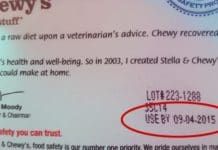It’s Tick Time!
This is the most trying time of the year for walking my dogs off-leash. On March 15 each year, the rules change for my favorite place to walk dogs, and only leashed dogs are allowed, until the end of June, for the bird nesting season. Rather than walk three dogs on leash - something I "can" do but don't enjoy - I switch to another nearby area where dogs are allowed off-leash year round. But in this particular area, oh my goodness, the ticks abound. I could forgo our off-leash walks for the months when the tick-free area where I walk the dogs the rest of the year is restricted to leashed dogs. But because we are able to walk off-leash so much of the time, my dogs (especially Otto) seem to really miss the joys of leash-free walks: being able to run ahead and run back, stop and really smell something very deeply, running to catch up if sniffing took a long time, stopping in mid-stride from time to time to stare at something or (again) smell the air for faint scents of wild animals or other walkers. After a leash-free walk, they sleep harder and longer, and their behavior is better for more days afterward.
Behind the Scenes of Our Dog Food Reviews
WDJ began publication in 1998, and we began reviewing dog food that year. There were very few products that met our early selection criteria - perhaps half a dozen - but we listed all that we could find.
I was in favor of the "teaching people to fish" approach to the reviews. I thought it was more important to teach dog owners how to read a dog food label so they could tell the difference between the really good ones and the ones with really attractive labels. My boss disagreed; he was in the "give people a fish" camp. He said, "Nancy, I know you are a writer, but trust me when I say that when it comes to this sort of thing, many people will never read your article; they just want the list of foods we approve of."
I was in favor of the "teaching people to fish" approach to the reviews. I thought it was more important to teach dog owners how to read a dog food label so they could tell the difference between the really good ones and the ones with really attractive labels. My boss disagreed; he was in the "give people a fish" camp. He said, "Nancy, I know you are a writer, but trust me when I say that when it comes to this sort of thing, many people will never read your article; they just want the list of foods we approve of."
Dogs, Cats, and Bats, Oh My
One evening more than a week ago, I'm sitting on the couch, sipping a glass of wine, engrossed in a Netflix movie, when my husband exclaims something from the kitchen - something that sounded like "cat" or was it "bat"?
"What?" I yell back.
He comes in grumbling about us having too many animals, and that there is a bat in the kitchen. Ducking reflexively, I may have shrieked, "Alive or dead?"
"What?" I yell back.
He comes in grumbling about us having too many animals, and that there is a bat in the kitchen. Ducking reflexively, I may have shrieked, "Alive or dead?"
Dogs and Chickens Can Get Along Fine
When I first saw the adolescent canine who was to become my darling dog Otto, in my local shelter in June 2008, his cage card warned Kills chicken" an endearing typo that evidently meant he had either killed a chicken
Skunks in Suburbia
Not long after my husband and I bought our house in 2006, we were introduced to another couple who, unbeknownst to us, shared our home address: a pair of skunks. They had a den under the house, and emerged shortly after dusk to wander through the neighborhood, foraging for fallen fruit from ornamental and backyard fruit trees, digging for grubs and worms in freshly watered lawns, and helping themselves to cat food on various porches where some people feed cats (feral and otherwise).
Looking Forward to this Phase Passing
If I had to name my puppy's most annoying trait, I'd have to say it's "fooling around" with my older dog, Otto. What do I mean by this? A person who wasn't familiar with dog behavior would be likely to say that Woody is pestering my older dog. He jumps up into Otto's face, licking and flopping around, and generally acting like a fool. The more he does it, the more irritated Otto gets. Otto may start out with his tail wagging, standing in one place and turning his head away, trying to ignore the puppy's foolishness. Within a few seconds, though, he will start baring his teeth and growling at the puppy in a fearsome manner, until they are either interrupted (by me), or by Otto abruptly deciding enough is enough and flattening the puppy with a roar and a lot of snapping teeth.
How Much Risk Should We Expose Our Dogs To?
A colleague sent me this link to a video of famed BASE jumper Dean Potter flying off a cliff wearing a wingsuit" with his dog
Check the Expiration Date
I'm a HUGE advocate of shopping in independent pet supply stores. They are generally run by people who really care and are knowledgeable about dogs (and other small pets). They tend to carry better-quality foods, treats, toys, training products, and just about everything else that the chain pet supply stores do. (But don't get me wrong: The giant pet supply chains are leagues better at identifying and carrying better-quality products than chain supermarkets and big box stores. I can't think of a single product I'd buy in the pet supply aisle at a Walmart, for example.)
Dogs Who Readily Pee in the Rain
This is what I'm grateful for this chilly, rainy morning: Three dogs who willingly and quickly go right outdoors and get to work. Not all at once, of course: there is a peeing order that is aligned with the pecking order. The puppy goes first. Tito, the older small dog, goes next. Otto, the benevolent leader of my little pack of three, checks to make sure it's really happening; Tito is so small it's hard to tell. Only after everyone else is done does Otto go back over both spots and mark them himself.
Up with Pups at Puppy Socials
I'm a big fan of "puppy socials" - a classroom-type setting to which people bring their puppies for socializing with pups of a similar age. It's a powerful opportunity for the puppies, especially the ones who are being raised with no other dog at home to learn basic canine social skills from - or the ones who DO share their homes with another dog, but the dog is super grumpy about puppies.
Foster Dog Goodbyes…Happy New Beginnings
For over three months, I had possession of a year-old American Black and Tan Coonhound or coonhound-mix whom I called Maebe. I absolutely loved that dog, and cried when I dropped her off for transport to her new home. AND I'm thrilled and tearful - in a good way - that she found a great new home. That's the bittersweet experience of fostering.
WDJ Writers Recognized by Dog Writers Association
I want to congratulate WDJ's long-time contributor, dog trainer/writer Stephanie Colman, for winning a Maxwell award from the Dog Writers Association of America (DWAA), for her article, "Service, Please," which ran in WDJ's July 2015 issue. The award is named in honor of the late Maxwell Riddle, who co-founded the DWAA. The awards were announced on February 14, at the Pennsylvania Hotel in New York City at the DWAA's annual awards banquet, held prior to the Westminster Kennel Club Dog Show.



















